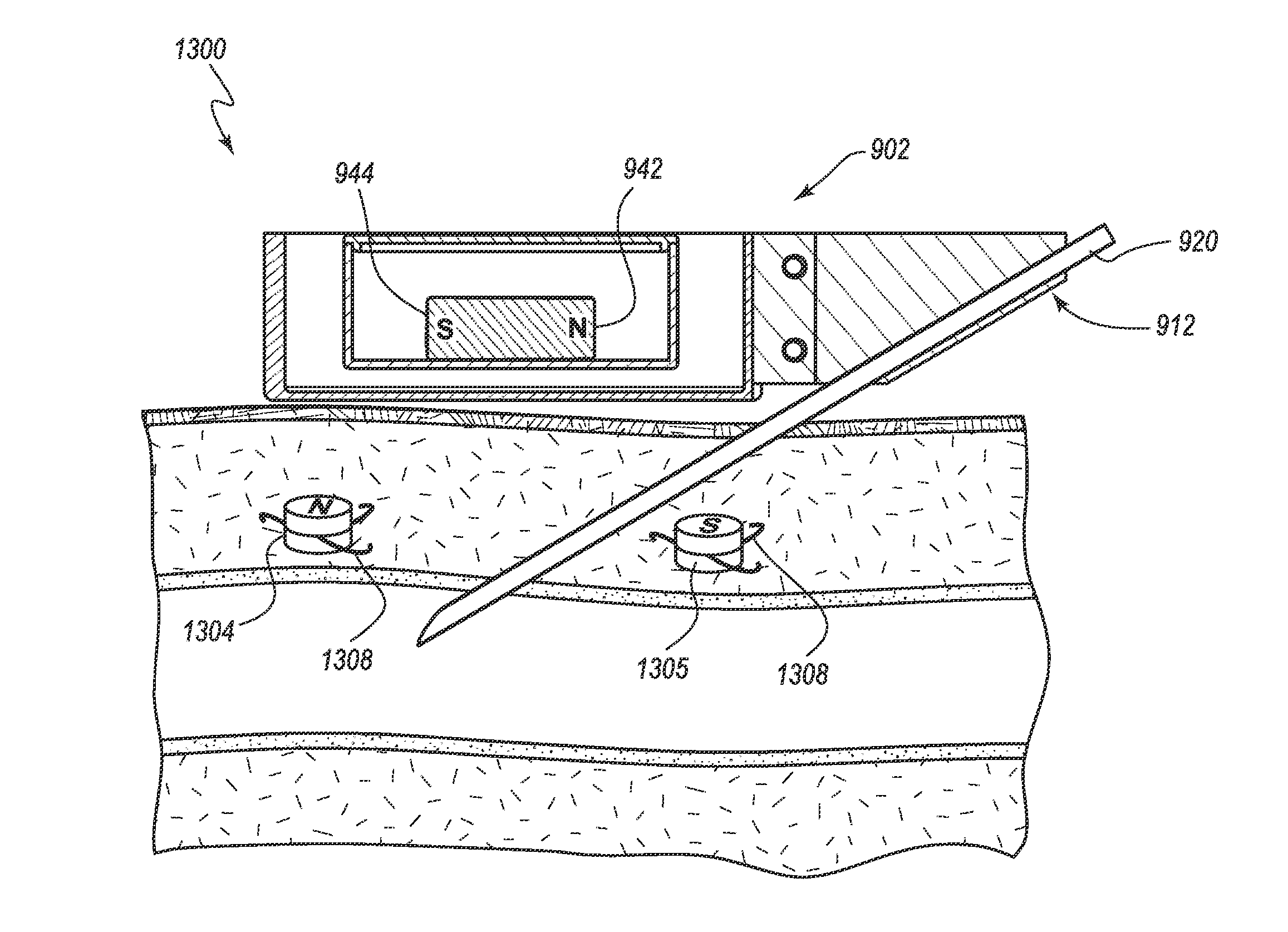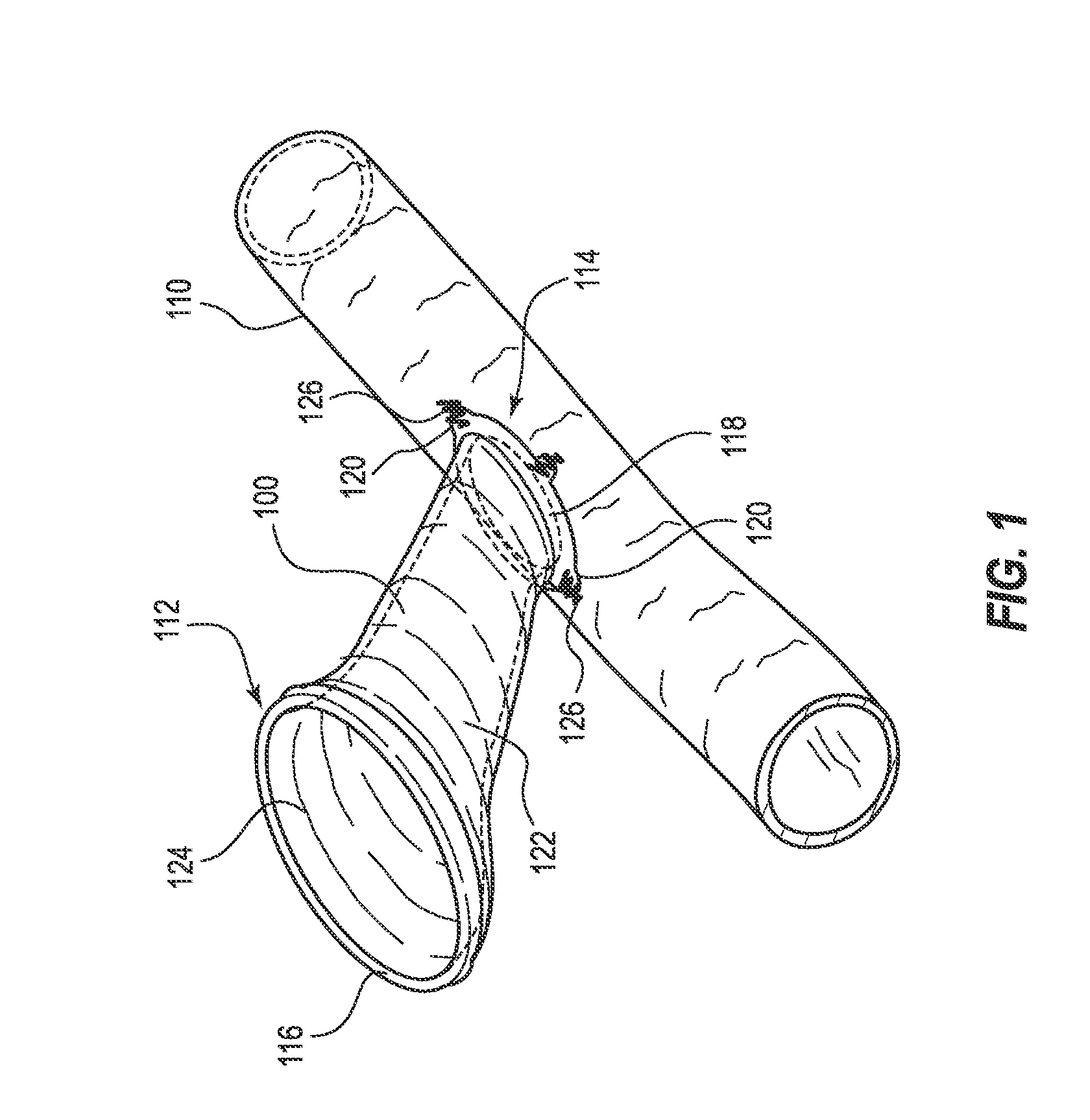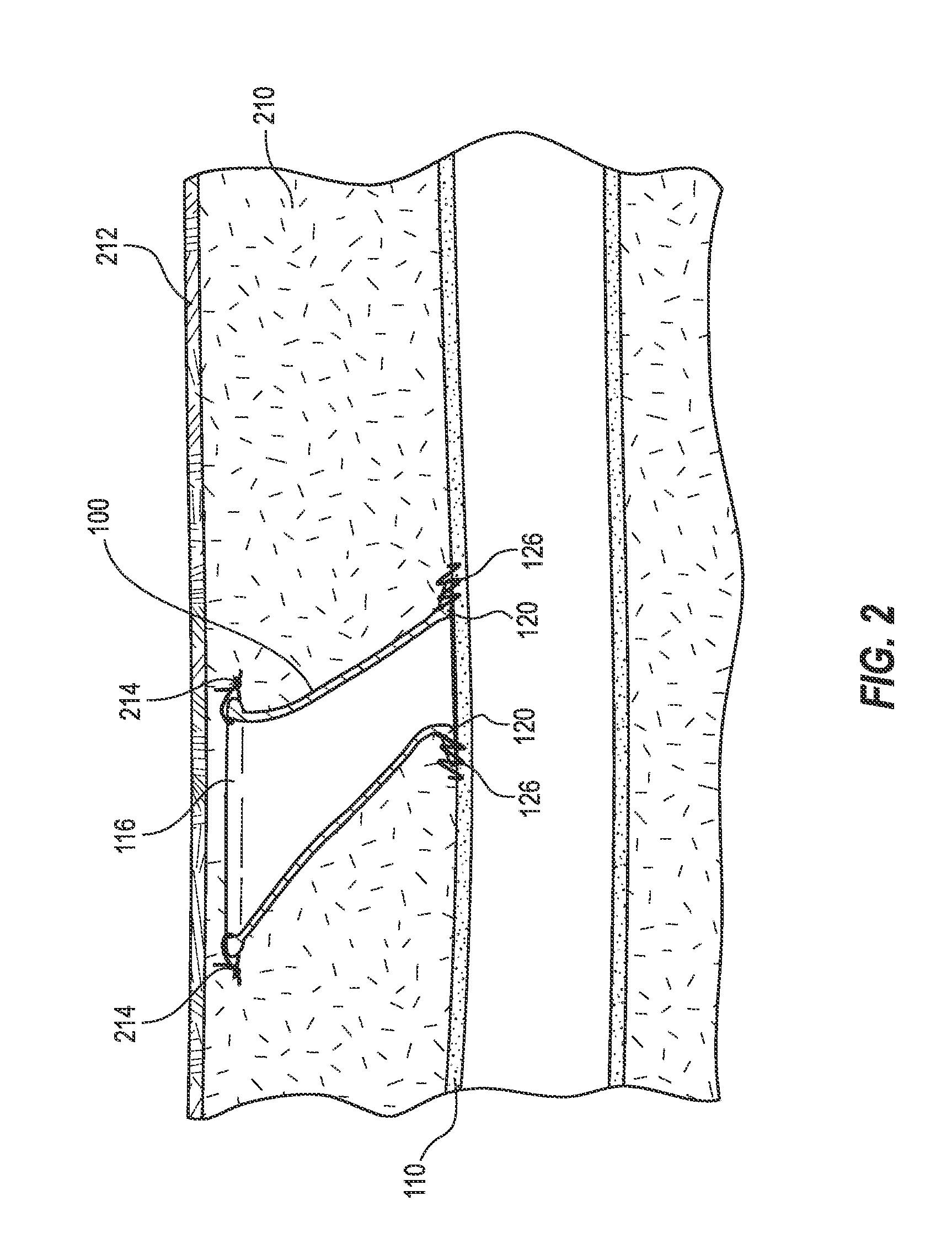Detection and guide systems and methods for accessing blood vessels
a technology of guide system and blood vessel, applied in the field of vascular access, can solve the problems of limiting the possibility of creating a new hemodialysis access site, occlusion of infusion port catheters, and phlebitis, and limiting future options
- Summary
- Abstract
- Description
- Claims
- Application Information
AI Technical Summary
Benefits of technology
Problems solved by technology
Method used
Image
Examples
Embodiment Construction
Intravenous chemotherapy infusion and venous hemodialysis may be significantly improved if one could avoid the use of in-dwelling catheters to accomplish these techniques. If one could rapidly and safely access a larger central vein, while minimizing trauma to this vessel, and could reliably access such a vessel repeatedly over the course of months to years, one could avoid or limit the problems of venous entry site stenosis, phlebitis, infusion catheter occlusion, and central propagation of clot. If such repeated but temporary central venous catheterization could be conducted by non-physician personnel, such as at a chemotherapy / oncology or hemodialysis outpatient clinic, with a high probability of successful venous access and low risk of complications, such an improvement would make such venous therapy clinically successful.
Embodiments described herein include a subcutaneous needle conduit that attaches to the external adventitial layer of larger veins, arteries, or other biologic...
PUM
 Login to View More
Login to View More Abstract
Description
Claims
Application Information
 Login to View More
Login to View More - R&D
- Intellectual Property
- Life Sciences
- Materials
- Tech Scout
- Unparalleled Data Quality
- Higher Quality Content
- 60% Fewer Hallucinations
Browse by: Latest US Patents, China's latest patents, Technical Efficacy Thesaurus, Application Domain, Technology Topic, Popular Technical Reports.
© 2025 PatSnap. All rights reserved.Legal|Privacy policy|Modern Slavery Act Transparency Statement|Sitemap|About US| Contact US: help@patsnap.com



